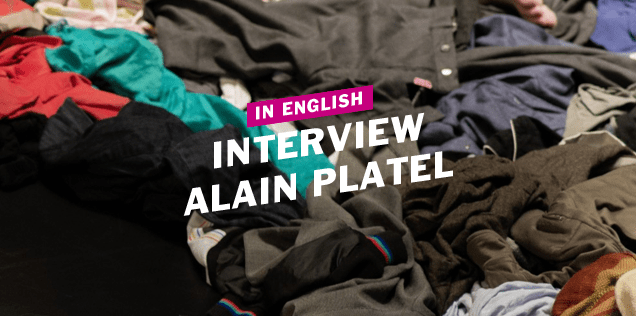Ten years after his first invitation with “Wolf”, Belgian choreographer Alain Platel is back at the Theatertreffen with his newest work “tauberbach”. This piece is inspired by “Estamira”, a documentary by Marcos Prado starring a schizophrenic woman in a Brazilian slum, and includes recordings, made by artist Artur Zmijewski, of death people interpreting Bach music.
Nathalie Frank: What brought you to Estamira ?
Alain Platel: I saw this documentary about her 8 years ago, and I immediately liked Estamira. I had her character in mind and I used to show it, once in a while, to dancers, hopping that something happens. When Elsie [De Brauw, the actress playing Estamira] asked me if we could work together, I thought that Estamira could be an inspiring character for her.
NF: So it’s Elsie who came to you ?
AP: Yes. She works in Gent as well, I had seen her several times in theatre pieces and I visited her as well during rehearsals at the conservatory next to our studio where she works. At some point she said she would like to make a piece with dancers – so yes, the first impulse came from her.
NF: How did you integrate an actress to your group of dancers ?
AP: That’s a question many people ask me, but in fact I’ve always worked with different kinds of people, with actors, dancers, professional, non-professionals, children… So it’s not that extraordinary for me to work with an actress. What is extraordinary is the encounter with Elsie, that is unique. In the first months, as usual, we did work a lot with improvisation and different inspiration quotes and then at some point we knew what we are talking about. “Estamira”, one of the starting points, ended helping telling a story. And the result is not that much a story of an actress among dancers but the story of six characters trying to live and survive their life.
NF: The piece is about survival and dignity…
AP: As I don’t have a ‚professional‘ past [Alain Platel used to be a special needs teacher] my driving force, when I make dance and theatre, is to search how you can make a piece that says something about the world we live in. In my first works it was still surreal, abstract, but little by little it became the most important. I don’t mean to make clear messages but I want to show something about the people. I believe that in “tauberbach”, where the poverty is very visible, it is essentially a metaphor to show people trying, in a difficult situation, to express a joie de vivre.
NF: Why did you chose to use Bach’s music sung by death people in this piece ?
AP: The first time I’ve listened to that music, it made a deep impression on me. I wanted to use this music one day but I had to find the right moment because somehow it embarrassed me as well. This time, as we were rehearsing, I felt that it was the right moment. Bach has always been a great inspiration for me since I make pieces, and this very unique recording is an interpretation of Bach that I love. I’ve always believed this composer wrote a very sentimental and emotional music, rather than a mathematical one.
NF: tauberbach premiered in January. How do your feelings toward the piece develop with time ?
AP: I felt before the premiere already that I really like this piece. But I couldn’t describe or explain it. Now with the piece being analysed or discussed with the audience I can express myself a bit better, but not yet really well. Because a piece is something that happens in real, with this tension between what is going on onstage and within the audience – writing or analyzing that is much more difficult.
This interview was made on the phone for the March issue of Berlin Poche
Exberliner is partner of the Theatertreffen-blog
Photo: Julian Röder
